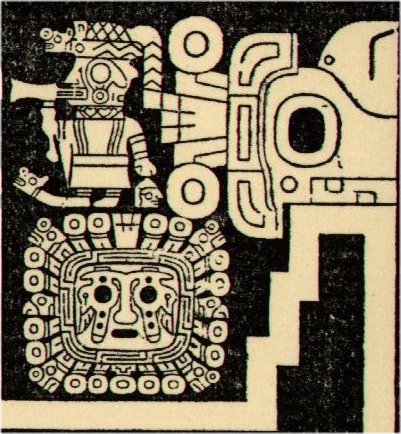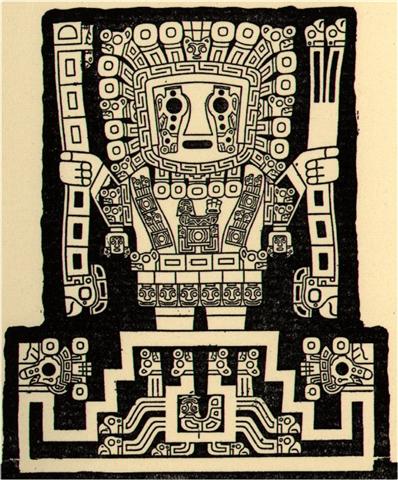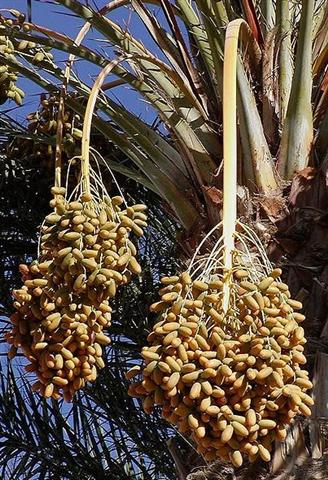There is a significant hole in the Narmer palette, a 'new moon' hole into which the King could enter in order to try to live on forever:
... When the new moon appeared women assembled and bewailed those who had died since the last one, uttering the following lament: 'Alas! O moon! Thou has returned to life, but our departed beloved ones have not. Thou has bathed in the waiora a Tane, and had thy life renewed, but there is no fount to restore life to our departed ones. Alas ... The Polynesian tupu can therefore be imagined as tu-pu - the corresponding hole for Ku: ... According to an etiological Hawaiian myth, the breadfruit originated from the sacrifice of the war god Kū. After deciding to live secretly among mortals as a farmer, Ku married and had children. He and his family lived happily until a famine seized their island. When he could no longer bear to watch his children suffer, Ku told his wife that he could deliver them from starvation, but to do so he would have to leave them. Reluctantly, she agreed, and at her word, Ku descended into the ground right where he had stood until only the top of his head was visible. His family waited around the spot he had last been day and night, watering it with their tears until suddenly a small green shoot appeared where Ku had stood. Quickly, the shoot grew into a tall and leafy tree that was laden with heavy breadfruits that Ku's family and neighbors gratefully ate, joyfully saved from starvation ...
... And then the bone spoke; it was there in the fork of the tree: Why do you want a mere bone, a round thing in the branches of a tree? said the head of One Hunaphu when it spoke to the maiden. You don't want it, she was told. I do want it, said the maiden. Very well. Stretch out your right hand here, so I can see it, said the bone. Yes, said the maiden. She stretched out her right hand, up there in front of the bone. And then the bone spit out its saliva, which landed squarely in the hand of the maiden. And then she looked in her hand, she inspected it right away, but the bone's saliva wasn't in her hand. It is just a sign I have given you, my saliva, my spittle. This, my head, has nothing on it - just bone, nothing of meat. It's just the same with the head of a great lord: it's just the flesh that makes his face look good. And when he dies, people get frightened by his bones. After that, his son is like his saliva, his spittle, in his being, whether it be the son of a lord or the son of a craftsman, an orator. The father does not disappear, but goes on being fulfilled. Neither dimmed nor destroyed is the face of a lord, a warrior, craftsman, an orator. Rather, he will leave his daughters and sons. So it is that I have done likewise through you. Now go up there on the face of the earth; you will not die. Keep the word. So be it, said the head of One and Seven Hunaphu - they were of one mind when they did it ... The ancient Egyptian sign for eternity was renpet, a branch from the date palm stripped bare of its leaves, and this was the sign in front of Pharaoh on the Narmer palette. The Egyptians used to cut a notch in such a branch in order to count time, one notch for each year (according to Wilkinson). ... From the natives of South Island [of New Zealand] White [John] heard a quaint myth which concerns the calendar and its bearing on the sweet potato crop. Whare-patari, who is credited with introducing the year of twelve months into New Zealand, had a staff with twelve notches on it. He went on a visit to some people called Rua-roa (Long pit) who were famous round about for their extensive knowledge. They inquired of Whare how many months the year had according to his reckoning. He showed them the staff with its twelve notches, one for each month. They replied: 'We are in error since we have but ten months. Are we wrong in lifting our crop of kumara (sweet potato) in the eighth month?' Whare-patari answered: 'You are wrong. Leave them until the tenth month. Know you not that there are two odd feathers in a bird's tail? Likewise there are two odd months in the year.' ... The god of eternity (Heh) was spreading out his arms holding of a pair of these date palm (Phœnix Dactylifera) branches - branches for counting time (keeping dates):
... There was once an Indian who was married and the father of a boy and a girl. The Trickster, who wanted to appropriate his fine garments and his wife, persuaded him to go and fetch eaglets from the top of a high peak. The Indian took off his clothing and started to climb up the cliff, which he found quite an easy task, since the way to the nest was like a stairway. But the Trickster commanded that the peak increase in height. He made the sides completely smooth so that the Indian was unable to come back down and remained stranded at the top. The Trickster did not attempt (as in Salish mythology) to assume the outward appearance of his rival. He related what had happened but said nothing of the part he himself had played, and claimed that the hero, before disappearing, had told him to take care of his wife and children. The wife consented but it was not long before her new husband started to scold his stepchildren without cause or reason. Such is the feeling with the stepfather or stepmother for children. The woman, who loved her children and was unhappy to see them being ill-treated, decided to divulge the suspicious circumstances in which her husband had disappeared. Everybody went to the foot of the peak which was strewn with beads; these were the tears shed by the hero who had wept for days and nights. They called upon the wild geese to help: they flew to the top, put the man on their backs and landed him safely. He was at once comforted and cared for; he recovered his health and strength. He then set off to look for his wife and children; he found them again and gave them food, for his rival had deprived the children of food in the hope that they would quickly die of hunger. The hero then hid in a meat sack, jumped on the Trickster and killed him. The corpse was cut up and the pieces scattered. However, the Trickster came back to life. He went away and stopped to rest by a lake, and meditated on death: should death be final or not? On seeing that a stick, then a buffalo turd, and lastly a piece of pith remained afloat after he had thrown them into the lake, he opted for resurrection. However, when a pebble sank, he reversed his decision. It was better that people should die, he concluded, otherwise the earth would quickly become overpopulated. Since that time, people only live for a certain period and die for ever ... The right fist of Heh was indicated in the renpet glyph (Gardiner's M4):
We can compare with the midnight god in the Gateway of the Sun and also with the Great One (Aquarius) in the Babylonian zodiac:
Counting from tagata honui (the great person) in Ca1-6, where he has buried his right fist in 'the hole of Zipacna', there were 378 (= 364 + 14 ) nights (as in the synodic cycle of Saturn) to the next occurrence of this essential place. There were 14 * 27 days from heliacal Deneb Kaitos (the Tail of the Great Sea Beast, β Ceti) to nakshatra Heze in Virgo:
Instead of the expected 3 + 3 'fists' (mata) in the maitaki (good) type of glyph there is only a pair of such at Heze (ζ). But a 3rd 'eye' seems to have been shifted from the left side (in the past) to the top position at the opposite side, looking as if it was a not yet fully developed great one. What remains at left in the glyph is formed like a reversed letter B:
|
|||||||||||||||||||||||||||||||||||||||||||||||||||||||||||||||||||||||||||||||||||||||||||||||||||||||||||||||||
















